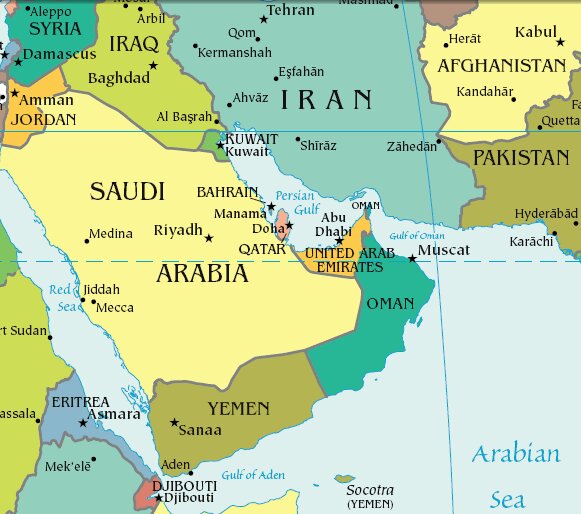International Relations
Saudi-Aramco Drone Attack
The twin drone attacks on Aramco crude oil production in Saudi Arabia have caused the biggest-ever disruption in global crude oil supplies and has further escalated tensions in the Persian Gulf.
- Yemen's Shia Houthi rebels, who have been locked in a war with a Saudi-UAE-led coalition since 2015, claimed responsibility for the attacks.
The Extent of the Oil Price Shock
- Saudi Arabia supplies 10% of the global world oil and is the world’s largest crude oil exporter.
- Crude oil prices have already shot up by over 10 %and oil prices are likely to trend around the $75 per barrel mark in the coming months.
- Assuming that this attack is not the start of international hostilities between a US-led bloc (including Saudi Arabia) and an Iran-led bloc (including the Houthis), the price shock could be relatively limited.
- The world has enough inventories to tide over the immediate shortfall.
Global Impact
- The attack, executed by drones, has not only suspended the production of almost 6 million barrels per day (about 6% of global oil supply) but also has cut output by 5.7 million barrels per day.
- The attack added to anxiety about the stability of the world’s oil reserves.
- The attack would be the adding of a geopolitical tensions premium to the price of oil worldwide.
- Oil prices would rise because of worries about more unrest hurting supply. Subsequently, higher oil prices tend to hurt the economy as consumer costs rise.
- Even if the plants go back online; prices may move higher and stay higher because traders would build in a “security premium” to shield volatility in oil prices considering West Asian unrest.
- The discovery of oil reserves in the USA made it less reliant on oil from the middle east which helped to prevent a situation of “World Oil crunch” which would have been otherwise.
Impact on India
- India imports 80% of the oil it consumes, which means there are multiple ways in which the country will be impacted by this disruption.
- India is already trying to make up for the loss of supply from Iran after US-imposed sanctions.
- Saudi Arabia is India’s second-largest supplier of crude oil — it accounts for almost 17% of the country’s imports.
- If the process of restoration takes more time than anticipated then India may face a crisis as global supply has been fairly volatile because of disruptions in some of the other big suppliers such as Venezuela, Libya, and Nigeria.
- As the dollar prices of crude oil rise, India would need to buy more dollars for the same amount of oil, thus depreciating the value of the rupee vis-à-vis the dollar.
- As a resulting rise in oil prices may worsen the Indian government’s fiscal balance.
- Moreover, higher crude oil prices would also lead to higher domestic oil prices, which, in turn, will further depress the demand for all things, which subsequently would lower economic activity and may lower revenues for the government.
Drone Attacks
- With growing animosity between Iran and Saudi Arabia, besides having a war-torn Yemen in the neighbourhood, the Gulf, which has been far from being peaceful, faces a new challenge in the form of drone attacks.
- With the rapid proliferation of drone technology and exponential growth of its global market in recent years, the possibility of a drone attack cannot be ruled out even in the safest cities in the world.
- Drones are becoming security threats particularly in conflict zones where non-state actors are active and have easy access to the technology.
- The primary reason for this proliferation is that drones are relatively cheaper in comparison to conventional weapons and yet can achieve far more destructive results.
- The biggest advantage that comes with using a drone for combat purpose is that it can be controlled from a remote distance and does not endanger any member of the attacking side.
- It is this easy-to-procure, easy-to-operate, and proven damage potential that makes it important for any country to equip its forces with anti-drone combat technology.
- These threats aside, what makes combat drones in the hands of non-state actors most dangerous is the threat of them being used deliver weapons of mass destruction.
Background
- Since 2014, Yemen is facing a multi-sided conflict involving local, regional, and international actors.
- The Houthis, a group of Zaidi Shia Muslims who ruled a kingdom there for nearly 1,000 years used widespread anger against President Hadi's decision to postpone long-awaited elections and his stalled negotiations over a new constitution to protest against the government.
- They marched from their stronghold of Saada province to the capital Sanaa and surrounded the presidential palace, placing Hadi under house arrest.
- A military coalition led by Saudi Arabia intervened in Yemen on March 26, 2015, at Hadi's request, after the Houthis continued to sweep the south and threatened to conquer the last government stronghold of Aden. Prompting one of the world's worst humanitarian crises ever.
International Relations
President’s Three Nations Visit
The President of India recently concluded his visit to the three nations namely, Iceland, Switzerland, and Slovenia.
India-Iceland
Historical Background
- India and Iceland’s friendship is based on the shared values and mutuality of interests.
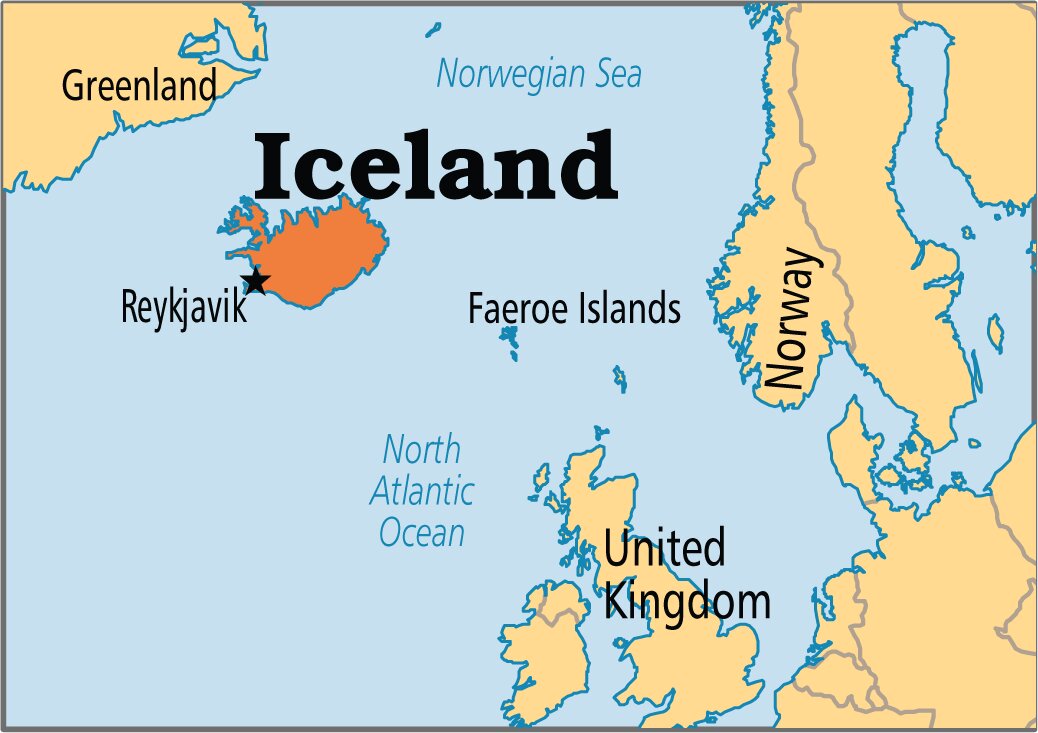
- A string of high-level visits between the two nations since 2000, imparted a new dynamism to the bilateral relations.
- Iceland was the first Nordic country that publicly extended support to India's candidature for permanent membership at the United Nations Security Council (UNSC).
- Iceland was one of the countries that co-sponsored the resolution at the UN to declare June 21 as the International Day of Yoga.
Key Highlights of the Visit
- India and Iceland signed and exchanged three agreements in the fields of,
- Fisheries collaboration,
- Cultural cooperation, and
- Visa waiver for the holders of diplomatic and official passport.
- Culturally, India’s long-pending demand for setting up a Hindi Chair at the University of Iceland was fulfilled.
- The Hindi language will now be taught at the University of Iceland.
- On the economic front, with India’s aim to become a $5 trillion economy by 2024-25, India’s transformative growth and Iceland’s technological know-how can add immense value.
- In the purview of Climate Change, India wants to combine its economic progress with clean technology.
- In this regard, Iceland’s pioneering efforts in green technologies, be it carbon capture, energy-efficient buildings or waste-to-wealth projects can leverage significant benefits to India.
- In the purview of Climate Change, India wants to combine its economic progress with clean technology.
- The future areas of cooperation between India and Iceland lie in the field of pharma, healthcare and biotech space, finance, hospitality and tourism services.
India-Switzerland
Historical Background
- India is one of Switzerland's principal partners in Asia. The two countries signed the Treaty of Friendship in the year 1948.
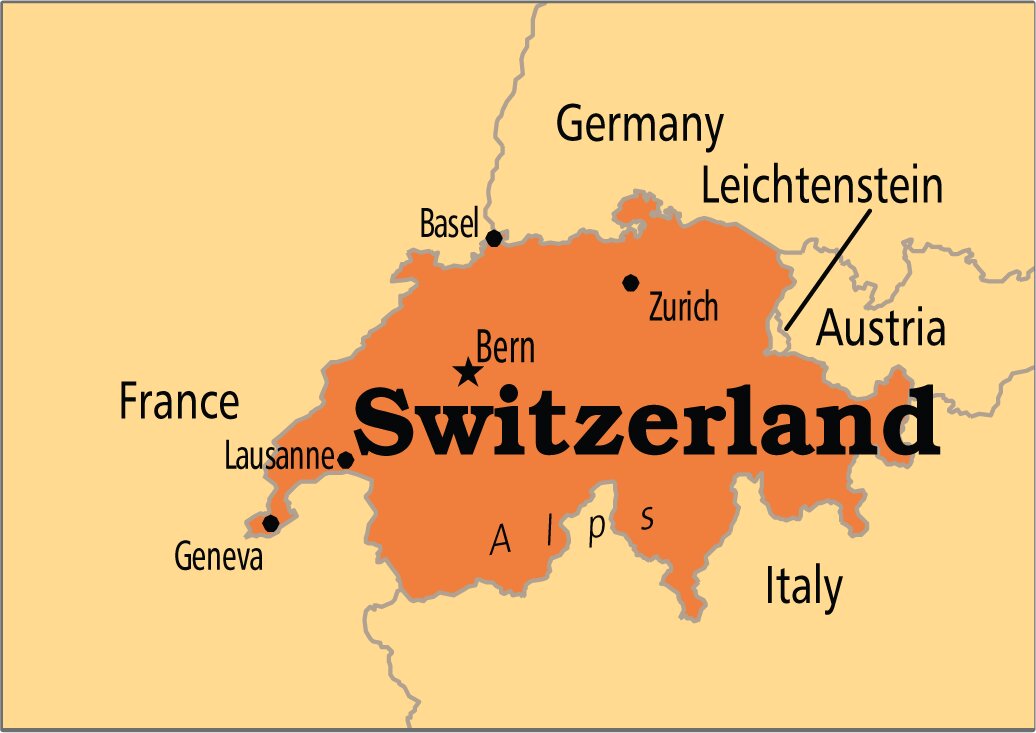
- Since then, Switzerland and India have signed numerous bilateral agreements that cover a wide range of areas such as trade, education and vocational training, visas, migration, air traffic, investment, finance, taxation, and scientific and technological cooperation.
Key Highlights of the Visit
- The Indian President addressed the Federal Council of Switzerland (which is the highest executive authority of Switzerland) and unveiled a statue of Mahatma Gandhi at Villeneuve, Switzerland.
- Both the countries agreed to have their first automatic exchange of information on tax matters.
- Switzerland is the largest exporter to India from Europe.
- The bilateral trade volume stands at around US$ 19 billion and India is committed to expand the trading ties further.
- The future opportunities lie in the field of capital, technology, science and skills, inter alia for mutual benefit.
India-Slovenia
Historical Background
- The Republic of Slovenia attained independence from Yugoslavia in 1991. And, India recognized the independent state of Slovenia in 1992 and supported its candidature for the membership at the UN.
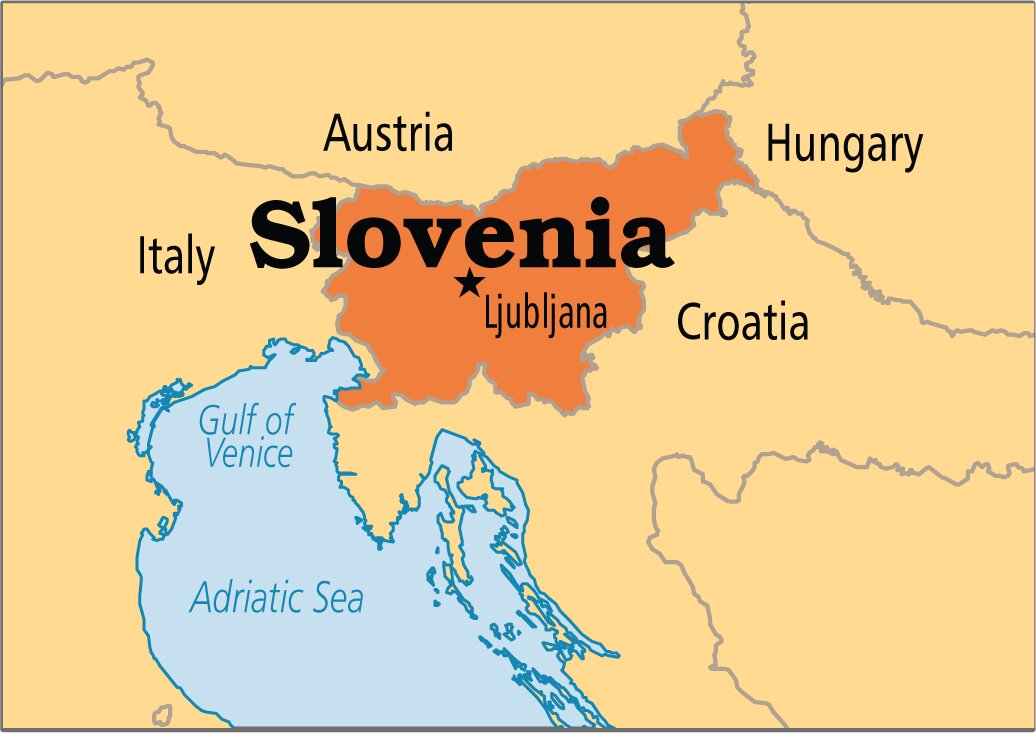
- Since then both the nations share cordial bilateral relations.
- The balance of trade between the two nations is tilted in favour of India.
Key Highlights of the Visit
- This is the first-ever presidential visit from India to Slovenia.
- India and Slovenia signed and exchanged seven MoUs and Programmes of Cooperation in the fields of Investment, Sports, Culture, River Rejuvenation (Clean Ganga Mission), Science & Technology and Standards.
- India sought for Slovenia's support in its bid to get permanent membership at the UN Security Council and the membership of the Nuclear Suppliers Group.
- The future cooperation possibilities between the two countries lie in the fields of high technology (especially clean technology), robotics and artificial intelligence, start-ups and innovation sectors.
Indian Economy
Liberalised Remittance Scheme
India has witnessed its highest-ever monthly outflow of $1.69 billion under the Liberalised Remittance Scheme (LRS) in July 2019.
- The outflow of funds by resident Indians under LRS over the last five years has almost negated the inflow of funds by Foreign Portfolio Investors (FPIs) in the same period.
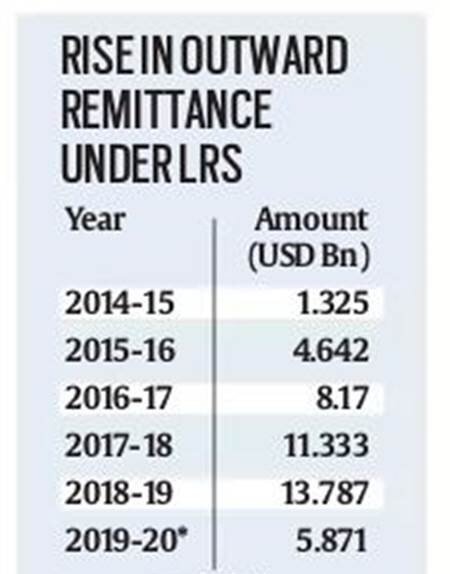
- The sharp rise in the outflow of funds under LRS scheme over the last five years indicates the flight of capital from the country.
Liberalised Remittance Scheme
- This is the scheme of the Reserve Bank of India, introduced in the year 2004.
- Under the scheme, all resident individuals, including minors, are allowed to freely remit up to USD 2,50,000 per financial year (April – March) for any permissible current or capital account transaction or a combination of both.
- Not Eligible: The Scheme is not available to corporations, partnership firms, Hindu Undivided Family (HUF), Trusts etc.
- Though there are no restrictions on the frequency of remittances under LRS, once a remittance is made for an amount up to USD 2,50,000 during the financial year, a resident individual would not be eligible to make any further remittances under this scheme.
- Remitted Money can be used for:
- Expenses related to travelling (private or for business), medical treatment, study, gifts and donations, maintenance of close relatives and so on.
- Investment in shares, debt instruments, and buy immovable properties in the overseas market.
- Individuals can also open, maintain and hold foreign currency accounts with banks outside India for carrying out transactions permitted under the scheme.
- Prohibited Transactions:
- Any purpose specifically prohibited under Schedule-I (like the purchase of lottery tickets, proscribed magazines, etc.) or any item restricted under Schedule II of Foreign Exchange Management (Current Account Transactions) Rules, 2000.
- Trading in foreign exchange abroad.
- Capital account remittances, directly or indirectly, to countries identified by the Financial Action Task Force (FATF) as “non- cooperative countries and territories”, from time to time.
- Remittances directly or indirectly to those individuals and entities identified as posing a significant risk of committing acts of terrorism as advised separately by the Reserve Bank to the banks.
- Requirements: It is mandatory for the resident individual to provide his/her Permanent Account Number (PAN) for all transactions under LRS made through Authorized Persons.
Foreign Exchange Management Act, 1999
- The legal framework for the administration of foreign exchange transactions in India is provided by the Foreign Exchange Management Act, 1999.
- Under the FEMA, which came into force with effect from 1st June 2000, all transactions involving foreign exchange have been classified either as capital or current account transactions.
- Current Account Transactions: All transactions undertaken by a resident that do not alter his / her assets or liabilities, including contingent liabilities, outside India are current account transactions.
- Example: payment in connection with foreign trade, expenses in connection with foreign travel, education etc.
- Capital Account Transactions: It includes those transactions which are undertaken by a resident of India such that his/her assets or liabilities outside India are altered (either increased or decreased).
- Example: investment in foreign securities, acquisition of immovable property outside India etc.
- Resident Indians: A 'person resident in India' is defined in Section 2(v) of FEMA, 1999 as :
- Barring few exceptions, a person residing in India for more than 182 days during the course of the preceding financial year.
- Any person or body corporate registered or incorporated in India.
- An office, branch or agency in India owned or controlled by a person resident outside India.
- An office, branch or agency outside India owned or controlled by a person resident in India.
Governance
National Recruitment Agency
A new National Recruitment Agency (NRA) will be set up to streamline recruitment process on subordinate-rank posts in the government.
- This is expected to streamline recruitment of Group-B (non-gazetted), Group-C (non-technical) and clerical posts in the government along with various equivalent recruitment in Public Sector Banks (PSBs).
- The proposed NRA is expected to reduce the burden of the Staff Selection Commission (SSC) and the Institute of Banking Personnel Selection (IBPS), among others, from holding preliminary recruitment exams, which is an extensive exercise.
- Once up and running, NRA will work as a preliminary single-window agency to shortlist qualifying candidates from the bulk of applicants and forward the list to SSC, IBPS, etc, to hold the mains.
- Recruitment conducted at present through the SSC and proposed to go to the new agency include the Combined Graduate Level (CGL) examination to enter government departments as Assistant Section Officers and several other examinations for Customs and Central Excise, Income Tax Department, and Ministry of Railways, among others.
- Similarly, recruitment tests for clerical-level recruitment in public sector banks are proposed to go to the NRA. The proposed agency, however, will not be in charge of recruitment of Probationary Officers (PO) in banks.
Staff Selection Commission
- The Staff Selection Commission is an attached office of the Department of Personnel and Training, Ministry of Personnel, Public Grievances and Pensions.
- The Government of India, in the Department of Personnel and Administrative Reforms, vide its resolution dated the 4th November 1975 constituted a Commission called the Subordinate Services Commission. The same was re-designated as Staff Selection Commission effective from 26th September 1977.
- It makes recruitment to various Group “B” and Group “C” posts in the various Ministries/Departments of the Government of India and in Subordinate Offices.
- It has its headquarters in New Delhi.
Institute of Banking Personnel Selection
- IBPS is an autonomous body formed in 1984.
- It is registered under the Societies Registration Act, 1860 and also a Public Trust under the Bombay Public Trust Act, 1950.
- It was created to render assistance to organisations in the areas of personnel such as recruitment, selection, placement, etc.
- It has its headquarters in Mumbai, Maharashtra.
Important Facts For Prelims
Coal Gasification Plant for Urea Project
The Minister of Chemicals & Fertilizers has signed a contract for the coal gasification plant for the urea project at Talchar, Odisha.
Background
- Currently, the production of urea in the country is done by using pooled natural gas which comprises domestic Natural Gas and imported Liquified Natural Gas(LNG).
- Import of LNG is costly and leads to spending valuable foreign exchange.
- Hence it is preferred that an indigenous raw material is used for the production of urea and other fertilizers in the country.
Production of Urea with Coal Gasification
- The project will improve India's self-sufficiency in Urea, promote agriculture growth in India.
- It will promote the use of abundantly available domestic coal in an environment-friendly manner.
- Also, the success of this technology shall also propel the usage of coal for the production of other products like syngas, diesel, methanol, petrochemicals, etc.
Coal Gasification
- The process of Coal Gasification chemically transforms the fossil fuel into Synthetic Natural Gas (SNG), instead of burning fossil fuel.
- It produces Syngas which is a mixture consisting primarily of methane (CH4), carbon monoxide (CO), hydrogen (H2), carbon dioxide (CO2) and water vapour (H2O).
- Syngas can be used to produce a wide range of fertilizers, fuels, solvent and synthetic materials.
- It is primarily used for electricity generation, for the production of chemical feedstocks.
- The hydrogen obtained from coal gasification can be used for various purposes such as making ammonia, powering a hydrogen economy.
- In-situ gasification of coal – or Underground Coal Gasification (UCG) – is the technique of converting coal into gas while it is still in the seam and then extracting it through wells.
Important Facts For Prelims
Astra Missile
Recently, ASTRA the first indigenously developed air-to-air missile was successfully flight-tested off the coast of Odisha.
- The missile was launched from Sukhoi-30 MKI.
- The Astra missile is developed by Defence Research and Development Organization (DRDO).
- It works on the Beyond Visual Range Air-to-Air Missile (BVRAAM) technology that enables the fighter-pilots to shoot precisely at the enemy targets which are beyond their visual range.
- The specifications of the missile are:
- Speed: over 5,555 km per hour or 4.5 mach
- Range: over 70 km,
- Payload/warhead capacity: 15 kg.
- Features:
- Electronic Counter-Countermeasures or ECCM feature enables Astra missile to overcome defensive measures put forth for the target by the enemy.
- Another deadly feature of this missile is the option to choose between “Lock-on Before Launch – LOBL” and “Lock-on After Launch – LOAL”
- Lock-on After Launch option allows the fighter aircraft to safely shoot and scoot after launching the missile towards the target.
- Astra is extremely effective in a multi-target scenario and therefore, has been described as the most potent weapon system for IAF’s combat aircraft.

